What Is SDLC?
SDLC stands for Software Development Life Cycle. It is considered one of the processes that are used by software development teams to design, develop and maintain high-quality software.
It is a process used by software development teams to design, develop, and maintain high-quality software. The SDLC framework outlines the steps involved in software development, from the initial planning and requirements-gathering phase to the final deployment and maintenance phase. There are several phases of SDLC and each phase of the SDLC is essential to the overall success of the project and helps to ensure that the final product is of high quality, meets the requirements, and is delivered on time and within budget.
The SDLC phases include planning, analysis, design, implementation, testing, and maintenance. The planning phase involves defining the project scope, goals, and objectives, while the analysis phase focuses on gathering and documenting user requirements. The design phase involves creating a detailed technical design and architecture for the software, and the implementation phase involves coding and building the software. The testing phase involves testing the software for bugs and errors, while the maintenance phase involves ongoing support and updates to the software to ensure its continued functionality and usefulness.

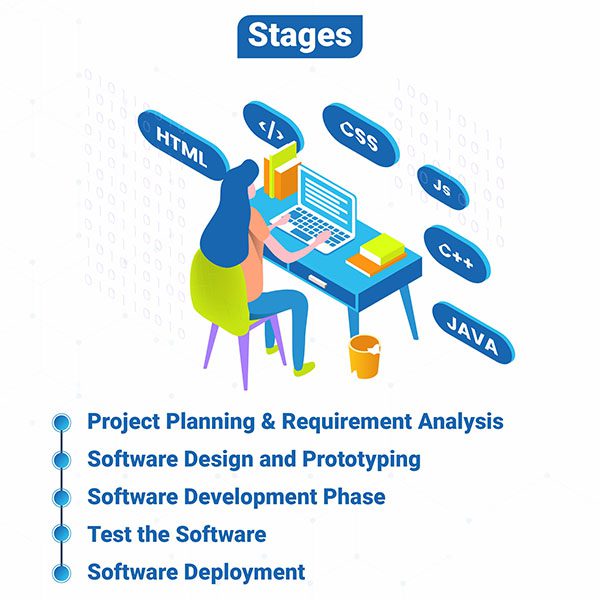
How Does SDLC Work?
Once you are done with knowing what is software development life cycle then it is time to know how this cycle works. One of the major reasons to apply SDLC is to better the quality and lessen the production time while decreasing the cost of software development. The software development life cycle follows a well-created plan to remove the important drawbacks of software development. Also, it helps to begin by assessing the present system for inadequacies. It works by following the different stages such as analysis, planning, system design, development, QA, and deployment.
What Are the Different Stages of the Software Development Process?
The software development process typically consists of several stages, which are commonly referred to as the Software Development Life Cycle (SDLC). The stages of the SDLC may vary slightly depending on the methodology used. Below mentioned are the steps that are an integral part of the software development. Let’s move ahead to know more about it in detail:
Planning & Requirement Analysis
This is the first stage of the software development process. This stage helps to get an overview of the project idea to know about the things and whether they are beneficial for the business or not. This stage also helps to define the strengths and weaknesses of the existing system along with the areas of improvement.
Software Design and Prototyping
Once your project requirement is understood and those are approved by software requirement specifications. The best custom software development company can start working on the software design. Therefore, the designers go through the standard pattern for the purpose of the development process of software or app architecture.
Software Development Phase
This is considered one of the most important phases of software development. In the beginning, the development team gets aware of the DDS to understand the software process. This stage cover-ups all the operational software that accomplishes the requirements that are defined in the SRS and DDS documents. After following all the things under this process, they provide you with fully functional and testable software.
Testing the Software
After following all the above steps testing is a vital step of software development-making to analysis that whether the software is working properly or not. Before launching the software in the market, it is important to know. To test the software properly it is necessary that you have a team of skilled professional QA testers that has experience and knowledge about all types of testing.
Software Deployment
Once you are done with going through all the stages of the software development this is the big time because you have to launch your software. In this time period, the project requires the whole team to write their user manuals for the purpose of developing instructional videos. After all the changes, the product will go for the beta release. This is the place where the end-user has access to use it.
Maintenance & Support
From the above-mentioned points, you will be able to know about software development and how to deploy it. But do you know what the importance of the maintenance and support phase holds? It is one of the stages that is known as the end of the beginning. Also, the software development life cycle doesn’t end with the deployment. After the release of the software, it is necessary to check on the software constantly to see whether there is an issue with the product launched or not. For this reason, there are several times when some errors and bugs occur at the time of consistent use.
Models of Software Development Life Cycle
Below is the list of the software development life cycle models.
Waterfall Model
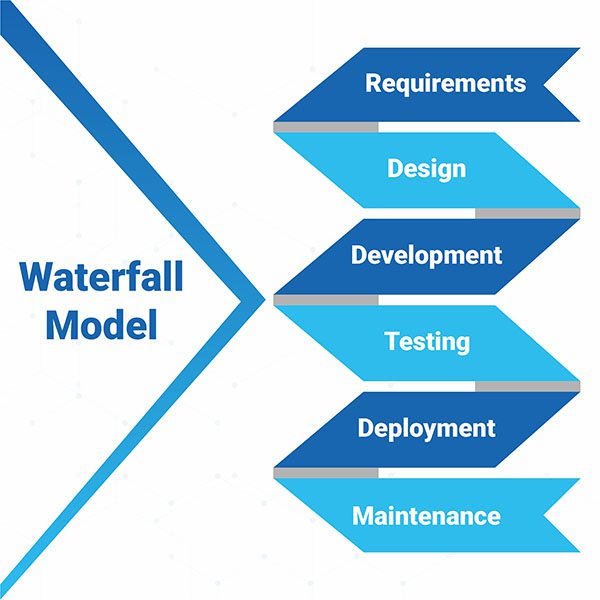
It is one of the oldest and most systematic software development life cycle models. It is also known as the linear sequential model. The model operates in a sequential manner, with each step dependent on the output of the previous step, similar to a waterfall. As a result, it is crucial for experts to work diligently and avoid mistakes, as there is no option to revisit previous steps once they are completed.
Prototype Development Model
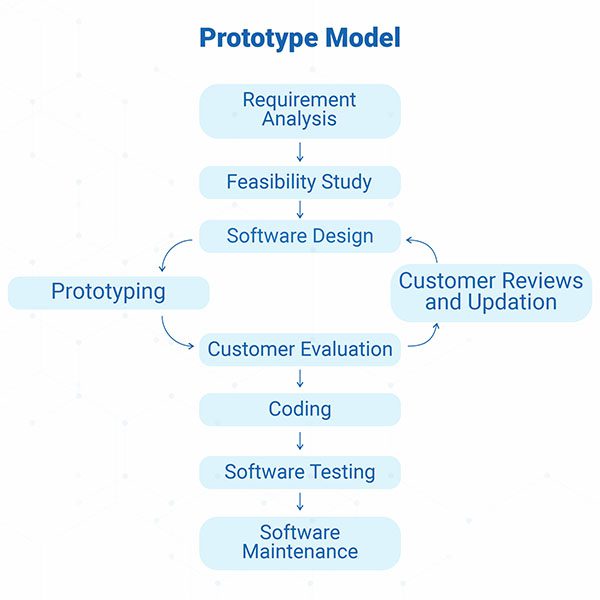
In this, the IT development company works on creating a product prototype before jumping to the design phase. A prototype includes essential aspects such as limited functions and ineffective execution depicting how the software system is going to look and work. While providing software or website development services, companies create prototypes to get early feedback from clients.
Agile Software Development Model

To ensure flexibility and adaptability in the software development process, it is recommended to choose a reputable custom software development company that follows the Agile methodology. Unlike the Waterfall model, the Agile approach enables developers to make small and incremental changes even in the previous stages, and it works by dividing the project into sprints that typically last for 2 to 4 weeks, each with specific objectives and requirements. Currently, the Agile methodology is preferred by a majority of software development agencies, with over 60% of projects being developed using this approach.
Iterative Development Model
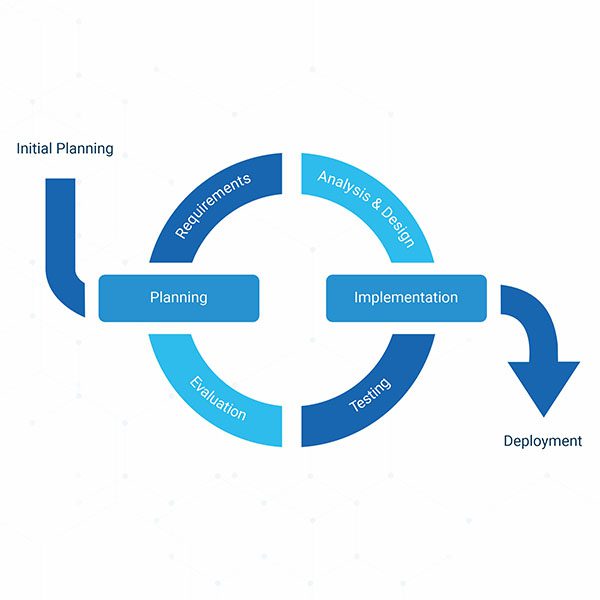
This is the model in which the developers create an incomplete product version at the end of each and every development cycle. In the first process, it is far from perfect during the time of meeting some of the software requirements. Therefore, each deployed version defines the product with more features and functionalities.
Spiral Model
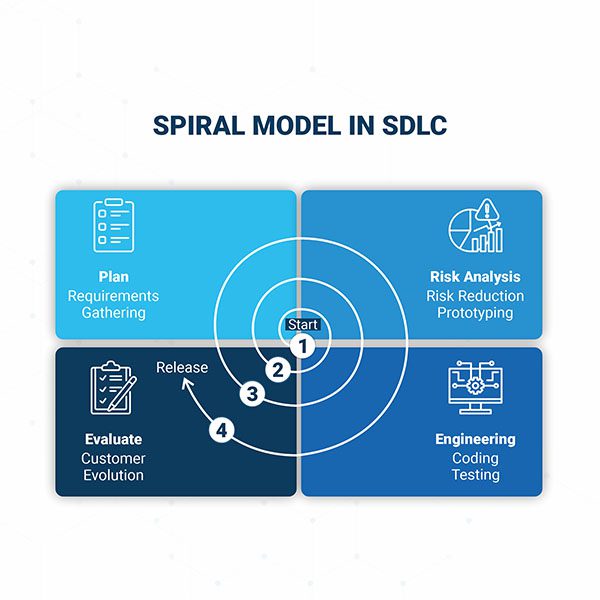
The spiral model works as risk driven software development method that helps to highlight the reiteration of the basic four stages that are determined by the objectives, assessing and resolving risks, developing & testing, and result evaluation while planning for the next iteration.
Who Provides Best Custom Software Development Services?
This blog has provided a comprehensive overview of the steps and stages involved in software development. Choosing the right methodology is crucial for project success. At Zentek Infosoft, we understand the importance of turning unique ideas into effective software applications. As a top software development company, we offer skilled software developers for hire. With a focus on creativity, we are committed to delivering high-quality software development services. Contact us today to bring your software idea to life!
 +91 141-4009009
+91 141-4009009 +1 (972) 215-7421
+1 (972) 215-7421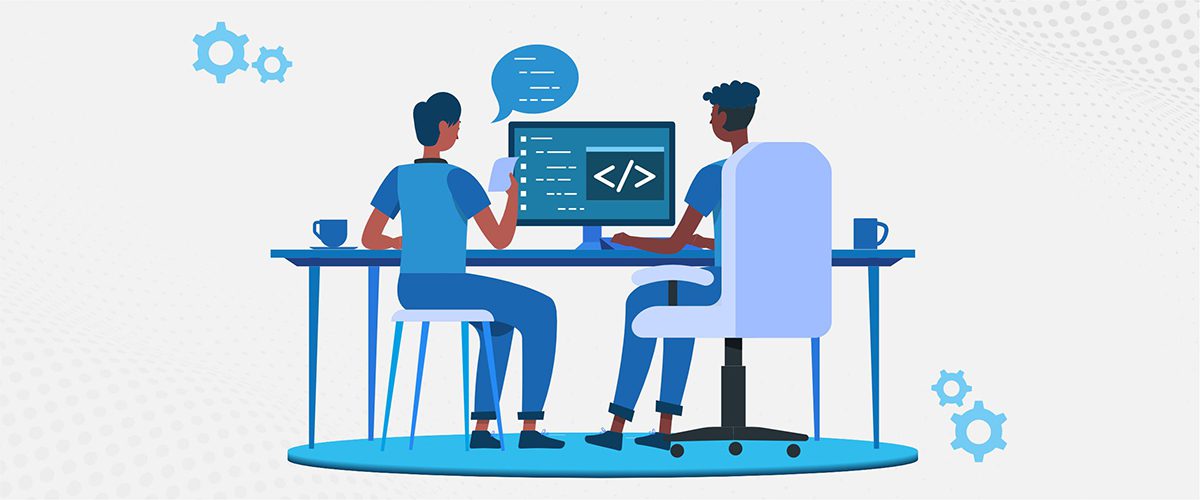


 USA - Dallas Registered
USA - Dallas Registered
 India Jaipur - Corporate
India Jaipur - Corporate